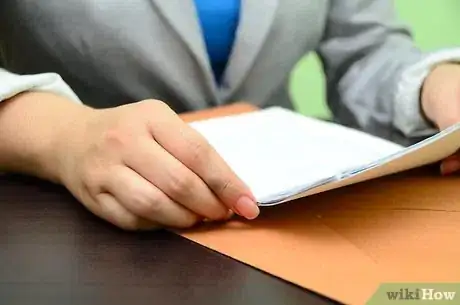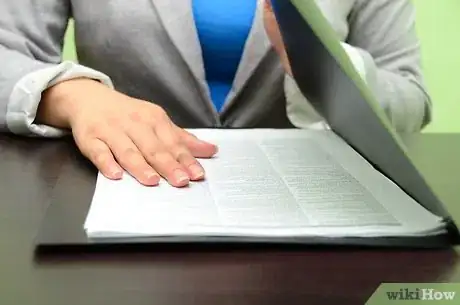wikiHow is a “wiki,” similar to Wikipedia, which means that many of our articles are co-written by multiple authors. To create this article, volunteer authors worked to edit and improve it over time.
wikiHow marks an article as reader-approved once it receives enough positive feedback. In this case, 93% of readers who voted found the article helpful, earning it our reader-approved status.
This article has been viewed 144,009 times.
Learn more...
A Trust is an entity that owns property for the benefit of another, called the beneficiary. A family Trust, also called a revocable living Trust, is a Trust created to hold the families assets in order to pass them to family members and avoid probate. A Family Trust may have certain tax benefits as well.[1] If you are ready to start your family trust, but are unsure where to begin, this article is for you. Start your Family Trust today, by following these easy steps.
Steps
-
1Decide who will be the Trustee. The Trustee is the person in charge of the assets in the trust. He or she collects assets, invests trust funds, and distributes assets according to the Settlor’s instructions. A Settlor is the person who creates the Trust. Generally, the Settlor will name him or herself as Trustee and select a successor Trustee, in case he or she becomes unable to manage the Trust.[2]
-
2Determine who the beneficiaries will be. You may name anyone you chose as a beneficiary of a Family Trust, even if he or she is not a family member. While selecting beneficiaries, you should think about how you want funds distributed in case of the death of any of the beneficiaries. For example, if you name your two children as beneficiaries, and one dies, his or her share could go either to his or her children or to your remaining child.[3]Advertisement
-
3Decide what assets you will put in the Trust. Some assets you may wish to place in your Family Trust include:
- Real Estate. You may transfer title of your home, business, or any other real property that you own to the Trust.
- Vehicles. If you decide to transfer any vehicles to the Trust, you should check with your insurance company first, as some insurance companies will not insure a vehicle that is owned by a Trust.
- Savings accounts. Savings accounts are one of the most common Trust assets and can be easily transferred to the Trust.
- Investment accounts. If you have investment accounts with a broker, you may want to put them into your Trust.
- Life insurance proceeds. You may want to check with an attorney before you transfer the proceeds of a life insurance policy into your Family Trust. In some states, this can have unintended inheritance tax consequences.
- Stocks and bonds. Stocks and bonds are common Trust assets and can be easily transferred to a Family Trust.
-
4Create your Trust Document. A Trust Document can be in any format you choose, but should include all of the following:[4]
- A name. Name your Trust so that it can easily be referred to later if you make amendments. Choose an easy name such as “Smith Family Trust”.
- The Date. Be sure to date the Trust document. Many people like to include the date in the name of the Trust. “Smith Family Trust- Dated September 14, 2012”, for example.
- The name of the Trustee and Successor Trustee. A Trust document is a legal agreement between the Settlor and the Trustee. The Trustee is agreeing to hold and protect the property for the benefit of the beneficiaries. Therefore, the first line of a Trust document usually says something like this; Agreement made and executed this 14th day of September 2013, by and between Jane Smith (“Settlor”, and John Doe, (“Trustee”).
- The name of each of the beneficiaries, and how they are related to the Settlor. When naming beneficiaries, you must consider what will happen to each beneficiaries share, should he or she die before you. You may have the assets go to the beneficiaries children or have them divided among the other named beneficiaries. For example, let’s say you have two children, Aaron and Sarah, and Sarah has 2 children. You leave 50% of the assets to Sarah and 50% to Aaron, but Sarah dies before you. If you want to leave her 50% share to her 2 children you would name Sarah as the beneficiary, “by representation”. The phrase by representation means that Sarah represents her line of the family, and her share would pass to them if she is deceased. If, however, you want Sarah’s share to go to Aaron, you would name her and Aaron as the beneficiaries, “as a class that closes”. This way, if one of them is deceased, their share goes to the other.
- A description of the how the assets should be saved, invested, and distributed.
- The property, amount of money, or percentage of the Trust that will go to each heir upon the termination of the Trust.
-
5Execute the Trust document. Both the Settlor and the Trustee should sign the Trust document in front of a notary public, and have him or her notarize the signatures.
-
6Transfer assets to the Trust. While you can name the items of personal property that will be included in the Trust in the Trust document, property with a title, such as real estate, savings and investment accounts, and vehicles must be titled to the Trust. How you put property in the Trust depends on what kind of property it is.[5]
- Bank and investment accounts. Change the name on the accounts to “NAME OF TRUSTEE, as Trustee of the NAME OF YOUR TRUST”. So for example if your Trustee is named John Doe and the Trust is name the Smith Family Trust, you would want to title your accounts to: “John Doe, as Trustee of the Smith Family Trust.
- Real property. To transfer real estate to a Family Trust, you must execute a Quit Claim Deed, quitting your claim to the property to the Trustee. Just as with bank accounts, you want to title your property to NAME OF TRUSTEE, as Trustee of the NAME OF YOUR TRUST”. So for example if your Trustee is named John Doe and the Trust is name the Smith Family Trust, you would want to title your property to: “John Doe, as Trustee of the Smith Family Trust.[6]
- Vehicles. Visit the Bureau of Motor Vehicles (“BMV”) for instructions on how to title vehicles to the Trust in your jurisdiction.
- Personal property. Personal property such as jewelry, household goods, and furnishings can be placed in the Trust by listing the property in the Trust Document itself. You can do this at the time that you create the Trust, or you can do it later as an Amendment to the Trust.
Community Q&A
-
QuestionHow long does it take to form a family trust, and what documentation is needed?
 Community AnswerTypically, it takes two or three weeks after the initial consultation to prepare the trust documents. After the trust documents are signed, it is necessary to complete the funding documents that are used to transfer ownership of the assets to the trustee of the trust.
Community AnswerTypically, it takes two or three weeks after the initial consultation to prepare the trust documents. After the trust documents are signed, it is necessary to complete the funding documents that are used to transfer ownership of the assets to the trustee of the trust. -
QuestionWhere do I go to get a trust?
 Community AnswerI obtained a trust through my accountant. It is a legal document, so I imagine using a lawyer would be a good idea.
Community AnswerI obtained a trust through my accountant. It is a legal document, so I imagine using a lawyer would be a good idea. -
QuestionHow do I start a family trust if I'm married in community of property?
 Community AnswerA lawyer can write a large or small trust, depending upon your assets. Once it is written and signed, you can simply make changes with your initials and date. You can choose for your lawyer to send copies to everyone in the trust. My husband and I set up a trust many years ago; it's nice knowing that when we die, our assets go to the right people. If you die and don't have a will or trust, it goes into the court who can/will make the decisions for you.
Community AnswerA lawyer can write a large or small trust, depending upon your assets. Once it is written and signed, you can simply make changes with your initials and date. You can choose for your lawyer to send copies to everyone in the trust. My husband and I set up a trust many years ago; it's nice knowing that when we die, our assets go to the right people. If you die and don't have a will or trust, it goes into the court who can/will make the decisions for you.
Warnings
- You should consult with a license attorney or tax professional before creating any type of Trust, as there may be legal and/or tax consequences of which you are unaware.⧼thumbs_response⧽
References
- ↑ https://www.legalzoom.com/articles/what-is-a-family-trust
- ↑ https://www.moneyadviceservice.org.uk/en/articles/being-a-trustee#what-is-a-trustee
- ↑ https://www.legalzoom.com/articles/what-is-a-family-trust
- ↑ https://www.legalzoom.com/articles/what-you-need-to-know-to-set-up-a-trust
- ↑ https://www.legalzoom.com/articles/what-you-need-to-know-to-set-up-a-trust
- ↑ https://www.nolo.com/technical-support-main/nolo-living-trust-transferring-real-estate-into-your-trust.html




































































